Death Valley Torture Test
2017 Honda Ridgeline vs. 2016 Toyota Tacoma TRD Off-Road
I had been catching glimpses of Kurt's pickup from my lead position in our 2017 Honda Ridgeline, but I could no longer spot his running lights through the dust. "Whe-r-re's the other tru-uck, T-trav-vis? Do you s-see K-kurt behi-ind you?" My voice was wavering as I spoke into the mic because we were driving on a relentless washboard dirt road on the way to a remote part of Death Valley National Park. Barely more than a third of the way there, we'd spent the last 10 miles making steady progress at speeds ranging between 20 to 25 mph — sometimes creeping up to 30 if we came to a smooth section.
See Edmunds pricing data
Has Your Car's Value Changed?
Used car values are constantly changing. Edmunds lets you track your vehicle's value over time so you can decide when to sell or trade in.

Our 2017 Honda Ridgeline is here to retrace the steps of the 2006 example we brought to this spot 12 years ago.
The radio's speaker soon crackled with Travis' unsteady reply, "N-nope. I d-don't s-see him." Travis was behind the wheel of our 2016 Toyota Tacoma TRD Off-Road 4x4 pickup, hanging back a respectful distance to let my dust settle. Kurt was in our big yellow 2016 Nissan Titan XD Pro-4X pickup and should have been hard to miss.
About 11 miles in, we came to a prolonged straight and there was still no sign of Kurt. We decided to pull over and wait. A break from staring through dusty windshields sounded like a good idea in the midst of so much starkly breathtaking scenery.
This was a clever re-enactment of what it looked like when Kurt and his Titan XD fell behind, only this time he's behind the lens.
What Are We Doing Out Here?
Death Valley got its name for a reason. This landscape can kill. There's very little water. Some years it never rains. The mercury regularly tops 120 degrees in summer, and the highest temperature ever reliably recorded on Earth — 134 degrees — was measured here at the aptly named Furnace Creek in July of 1913. But we were there before summer arrived in full, and our chosen washboard path marched up a spur canyon at a higher elevation. We never saw more than 80 degrees all day — a point worth noting as our story progresses.
I always wanted to visit this particular corner of Death Valley because it's home to the Racetrack Playa. More simply known as the Racetrack, this dry lakebed has zero to do with racing, and you'll get in big trouble if you so much as put a wheel on its surface. That's because the Racetrack is a geological oddity you might know from the Discovery Channel. It's the place where toaster-oven-size rocks mysteriously move when no one is looking, which is most of the time because the playa is inconveniently located 27 miles down a punishing washboard dirt road as bad as any you've ever seen — in Death Valley, no less.
That dirt road begins at the dead end of one of the least used paved roads in the park, so no more than a handful of hardy tourists venture this far onto this dusty track on any given day. That said, unless it just rained or snowed — which it almost never does — Racetrack Road has no discernable creek crossings or washouts. Just looking at it, few would classify it as off-roading. After all, it's a graded, hard-packed dirt road that doesn't require four-wheel drive, has no motorcycle-induced whoop-de-doos, and doesn't require much more than the usual amount of ground clearance. The biggest apparent danger is a flat tire because the surface is littered with small stones.
Our 2017 Honda Ridgeline is here to retrace the steps of the 2006 example we brought to this spot 12 years ago.
Unfinished Business
But there is another reason we're here. Back in 2005, we had a 2006 Honda Ridgeline in our long-term fleet, and almost exactly 12 years ago to the day one of our editors drove it down Racetrack Road to see the moving stones. Our man and his family made the 54-mile out and back round trip without apparent incident, but when they returned to pavement it instantly became obvious that something was seriously amiss. The truck bounced and heaved alarmingly, and after tiptoeing home he took it to a dealer and learned that all four dampers — both front struts and both rear shocks — had been ruined.
The dealer refused to believe this had happened on a graded dirt road, but it eventually agreed to fix it under warranty as a goodwill gesture. We later learned that those parts made their way back through the system to Honda engineering in Ohio, and the Honda folks' analysis of the parts and the road led them to decide that a Ridgeline 4x4 should have survived the trip. As a result, certain internal damper valve design changes were made to the new Honda Ridgeline.
This test was preordained, in other words. It wasn't a matter of if we would go back; it was a matter of when and who. We had so many hand-raisers that we brought our Tacoma along because it's the Ridgeline's off-road-focused rival and because traveling in pairs on remote roads is always a good move. In the process we hoped to compare the washboard ride of a traditional live-axle pickup to a crossover-based one with an independent rear suspension. As for the Titan, it was drafted into service to tote the extra spare tires, gear and photo equipment we brought so the others could remain as lightly loaded as our 2006 Ridgeline had been.
Kurt's tailgate had fallen open, among other things.We assume the rattling activated the handle, so we locked the handle with the key.
Do You Smell Something?
Travis and I tossed a few of the sharper stones off the track and joked around as we scanned the horizon for Kurt. But then we caught a vague whiff of something oily coming from the general vicinity of the Tacoma. Our noses led us to the rear end, and I followed the scent into the right rear fenderwell. I could not believe what I saw.
Oil was everywhere. It had splattered onto the frame and thoroughly coated the cup-shaped mounting bracket that held the upper end of the shock absorber. This was all very obvious because the shock's dust boot had partially melted and slid down over the now-scorched yellow shock body, revealing a missing chunk from the seal area. The inside surface of the wheel was damp with shock oil, and the tire's inner sidewall looked like a sunburst with rivulets of the stuff radiating out. Some of the longer strands had been flung off to paint a broad stripe inside the fender liner.
We hurried to the left rear corner and saw much the same thing: oil everywhere, a melted boot, scorched yellow paint. The front shocks seemed to be OK, but that didn't temper our disbelief over what had happened: The road had taken out both of the Tacoma's rear shocks before we even made it to the halfway point.
Oh, there it is. The top melted out due to the extreme heat, and it telescoped down over the shock body.
I'm Almost Afraid to Look
If this road could bring the TRD Off-Road package and its Bilstein monotube shocks to its knees, what could this possibly mean for the Ridgeline, a truck many are quick to write off as a poseur, a crossover masquerading in truck's clothing?
We rolled under the Ridgeline for a look and to our surprise the right rear shock looked ... reasonably OK. There was no sign of overheating of any kind, no residue of an oily explosion, and the rubber dust boot was fully intact. A small damp patch of oil indicated it had leaked a little bit, but it still appeared to be functional. As for the left rear, it looked 100 percent fine.
Against all expectations, it seemed the Ridgeline had just kneed the Tacoma TRD Off-Road package in the groin.
Meanwhile, the Ridgeline's right rear shows no signs of extreme heat except a small dribble of oil; the left rear looked unhurt.
Yeah, but Where's Kurt?
Through all of this Kurt remained AWOL, so we mounted up and headed back. As always happens in these situations, we met him coming the other way in 10 seconds. We all hopped out to see what had happened.
Apparently the XD's upper tailgate trim had rattled loose and fallen onto the trail, and he'd turned back to retrieve it. Then the tailgate itself had crashed open, and he had to stop and do a quick inventory to make sure nothing expensive had fallen out. Then he started telling us about this oily smell he'd caught a whiff of.
Travis and I exchanged glances before sprinting for the rear of the Titan. Sure enough, its right rear shock had blown a seal. Oil was everywhere, the yellow paint on the shock body looked scorched, and the sorry-looking dust boot was shriveled and crispy as if it had been smoldering. A lack of spilled oil indicated the left rear shock hadn't yet reached the point of bursting, but its paint was scorched and the dust boot had seen better days, too.
But that wasn't the worst of it because when he caught up to us we found that his right rear shock looked as bad as the Tacoma's.
A Change of Plans
There's only one thing to do at a time like this: Keep going. We hadn't yet seen the mysterious moving rocks. Besides, we had no idea when the shocks had failed on the 2006 Ridgeline. It had covered the entire 54 miles, but we'd only done 11 of them. Maybe we'd achieve the same result over the full distance.
And this was now a three-truck situation. The Pro-4X Titan was no longer a mere support vehicle; the Tacoma wasn't just a bit player. The road had dragged them deeper into this endeavor than we'd ever imagined.
Not to say we didn't make changes. We decided to slow things down to no more than about 20 mph and took some air out of the tires. Seasoned off-roaders routinely "air-down" on challenging terrain, but many don't bother on a mere washboard road. And since our man hadn't done so 12 years ago, we hadn't either. But we had two seriously wounded trucks and one with a possible sprain. We didn't figure it would make the road any less brutal, but in the name of mechanical sympathy we had to do something.
Still no sign of Kurt, but that phone's not liable to be of any help because we're miles away from service.
Teakettle Junction
Travis and I changed places for the next leg. The Tacoma was a complete handful, a rodeo ride you couldn't fall off of after 8 seconds, but wished you could. With absolutely no rear damping, the rear end of the truck skittered left and right as the tires rebounded off the crest of each wave. The traction control light flashed like a Vegas marquee.
In the trailing Titan, Kurt was laughing at me over the radio, although I doubt his yellow machine looked any better had there been anyone following to provide him with running commentary. As for the Ridgeline up ahead, it looked rock solid. The right tire might have been bouncing a little more than the left, but Travis reported no skittishness over the radio.
At about 20 miles we came to a junction, a locally famous intersection whose sign is hung with numerous derelict teakettles. It's a famous photo opportunity, so we all hopped out to have another look at the trucks. The Tacoma's rear end couldn't get any worse, but the Titan's left rear seal had now burst to match the right one. As for the Ridgeline, the right rear shock was wetter, but there was still no paint discoloration, no melted boot. And the left rear still looked factory fresh apart from the inevitable coating of dust.
They call this place Teakettle Junction. No other explanation is necessary.
The Racetrack
Travis and I swapped places again for the final leg. The Ridgeline felt like a limousine after my stint in the Tacoma. But the leaky right rear shock was no longer keeping its wheel buttoned down, and every once in a while that tire would fly up and thump into the bump stop. The truck tracked straight and true, though, and was still a far better place to be than the Tacoma.
As we got close to the ancient, withered shoreline, the character of the washboard changed from rocky to sandy, but if anything that only made it feel worse. Thankfully, only a half-mile remained before we parked at the lakebed. We had reached our goal in one piece, with the trucks arriving in the same wounded condition they'd been in at Teakettle.
We left our trucks behind to wander goggle-eyed onto the lakebed to stare at the stones and marvel at the seemingly random trails they'd carved into the baked surface the last time they'd moved. The mechanism had been a mystery for decades. But even though someone finally confirmed one of the leading theories a couple of years ago, the place was no less wondrous.
The reflected sun was intensely bright out there on the playa, and we'd arrived at high noon. We took selfies with our favorite rocks, and in less than an hour we loaded up and pointed our rigs back the way we'd come. This was only the halfway point.
There's one!
Retracing Our Steps
With nothing to look forward to but more dust and fatigue, the return trip was tedious. We were hot, the trucks had seen better days, and we found ourselves plodding along at between 15 and 17 mph. After 20 minutes we stopped again at Teakettle Junction for another look and found that nothing had changed. A half-hour later we trundled past the 11-mile point where we'd waited for Kurt what seemed like a week ago.
Then about 15 minutes later, I saw a streak on the ground about 20 feet long. It was slightly right of the road's center, and it tapered like a giant exclamation mark, beginning as a point and spreading to about 4 inches wide as I drove its length. I saw another one just like it about a quarter-mile later, but this one was left of center. These were the streaks that marked where the Tacoma's shocks had burst their seals, first the right, then the left. I made a note of the trip odometer reading.
This fit an emerging pattern. We already knew the Titan's right-hand shock had gone first, and that was the only one damaged on the Ridgeline. Drivers will favor the right-hand side if a dirt road is wide enough, so the washboard shape at the edges will be the result of travel in one direction. The middle, where left-hand tires tend to run, will be sculpted by travel in both directions. How that made a difference was unclear, but it seemed to.
You can't tell from this view that our Tacoma has lost both of its rear shocks in the first 6 miles.
Pavement Paradise
There's a feeling you get when the dirt runs out and you return to pavement. Your tired old truck suddenly feels like a Cadillac. We enjoyed about a minute of that before we circled to the parking lot to air up our tires. While we waited I did some quick trip odometer math. The answer was 6 miles. That's how long the Tacoma's rear shocks lasted before they'd called it a day. The Titan did somewhat better, if only because one of its rears had let go at some point between 11 and 20 miles. As for the Ridgeline, just one of its dampers was compromised during the trip, and it was a gradual decline.
But our colleague hadn't known anything was wrong with his 2006 Ridgeline at this point. It only became obvious after he left the lot and headed down the sinuous paved road toward Furnace Creek. Our 2017 Ridgeline felt completely normal. It didn't bounce or heave, and it remained utterly stable and controllable through the various undulating corners. Perhaps a reasonable amount of oil remained in the right rear after all. Meanwhile, Travis and Kurt had their hands full, with their rigs bounding and bucking over every wave and ripple. I had to reel in the pace so they could safely tiptoe back to camp.
The next morning we drove the trucks straight to their respective dealers for new shocks. The Ridgeline needed just the one, the Tacoma got a fresh pair of rears, but it turned out the Titan XD needed to have all four replaced. The sad state of the fronts only became obvious after the rears were changed out. They hadn't leaked and their dust boots looked fine, but the now golden-brown shocks had apparently failed internally.
Right about now we wished we had a bigger compressor to get the job done faster.
Making Sense of It All
Beyond seeing the Racetrack, the original point of this trip was to replicate the experience with the 2006 model and see if the suspension changes applied to the 2017 Honda Ridgeline had made a difference. And now we know they have. Only one shock was damaged this time, not four, and it retained enough function to be completely drivable on pavement after the fact.
As for the Tacoma, things got out of hand too quickly to compare its washboard ride comfort to that of the Ridgeline. But that very fact illustrates the point anyway. On a road like this a solid rear axle is a lot of "unsprung" mass — many hundreds of pounds — hammering up and down. (The heavy-duty Titan XD components weigh even more.) The shocks must constantly absorb a lot of energy in order to control the ride, and the whole process of controlling that energy generates heat.
shocks must constantly absorb a lot of energy in order to control the ride, and the whole process of controlling that energy generates heat.
From this standpoint, the Honda's suspension has the easier job. Being independent, it's split into two halves. Each shock is tasked with controlling a smaller and lighter wheel, tire, hub and brake assembly. The differential and driveshaft don't count because they're attached to the frame, and only 50 percent of the mass of the suspension links, naked axle shaft and coil spring counts because only one end moves in response to a road input.
For a given road input, a Ridgeline's shock has to contend with perhaps a third of the mass seen by a Tacoma's, maybe less. Its motions are going to generate a lot less heat. Multiply that by 54 miles of washboard and it makes a huge difference.
We posed the bookends in the midsize pickup segment for a quick photo before we started the long journey back.
To Off-Road Package or Not?
This result does not make the Ridgeline a better off-road vehicle. A capable off-roader in the traditional sense still needs abundant ground clearance, steep approach and departure angles, a decent amount of suspension travel, low-range gearing, a full-size spare tire, and maybe a lockable differential or two. The Ridgeline has none of these things. A washout could have easily stopped the Ridgeline in its tracks.
As for the shock failures suffered by the off-road package vehicles, the above list of clearance and gearing factors didn't come into play here. This road is brutal in an entirely different way, and the very solid-axle concept on which they are built turns out to be a disadvantage here. But that's hard to convey because it looks so easy. Nearly anyone would expect that an off-road package of the Tacoma's caliber and reputation would survive this. As it happens, its Bilstein rear shocks are the skinniest ones the company offers. Things might have been different if Toyota used the next size up.
But such things are built to a price, and any performance enthusiast will tell you that tires and shocks are two of the most important interchangeable pieces of any suspension. It's easy to size up your factory tires and swap them out if you want more performance. The same is true of shock absorbers, but it's harder to know if you need to upgrade. If you do, the aftermarket is robust and full of bolt-on upgrades — Bilstein included — that feature remote reservoirs, aluminum bodies, bypass ports and other tricks to hold more oil and help them run cooler in conditions like the ones we encountered.
More than anything, the long road to Racetrack Playa is brutal. Few people would look at it and deem it to be true off-roading, but it turns out that a washboard surface can be a shock killer. However, this road also demonstrates that the Ridgeline and what some people disparagingly call "soft-road" crossover SUVs may well be a choice worth serious consideration among those who regularly drive established dirt roads. Maybe not one as relentless as this one, but as long as there's sufficient clearance and traction, the lower unsprung weight of their independent suspensions can be a distinct advantage.

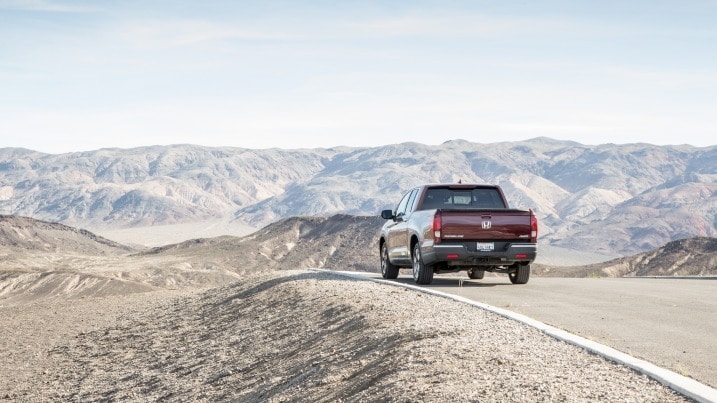
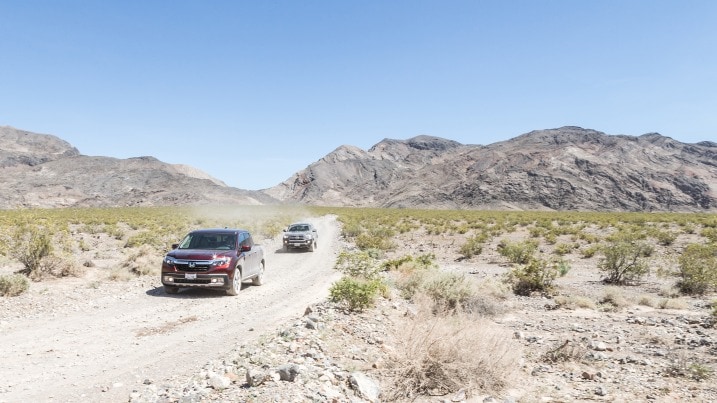
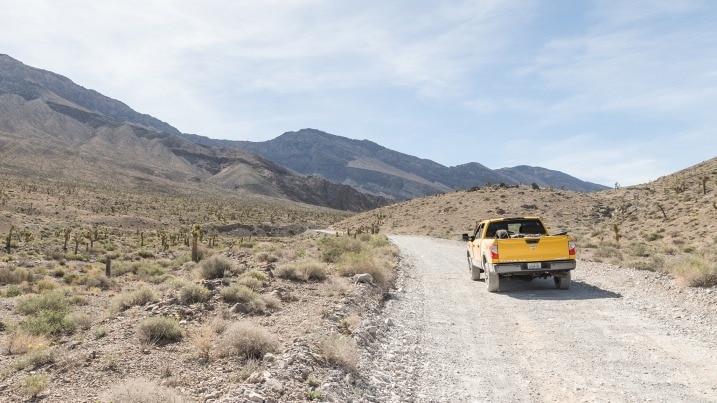
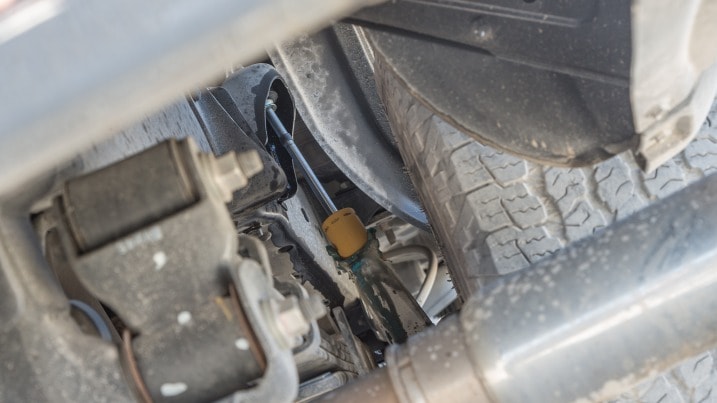
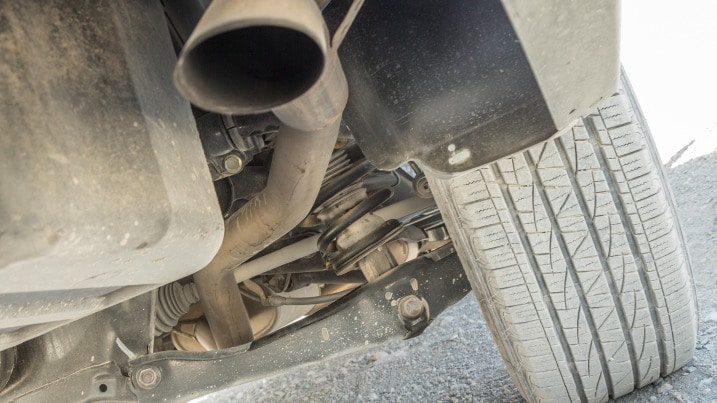
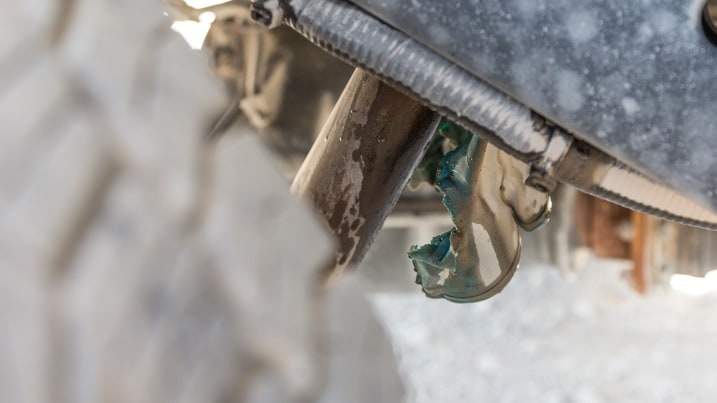
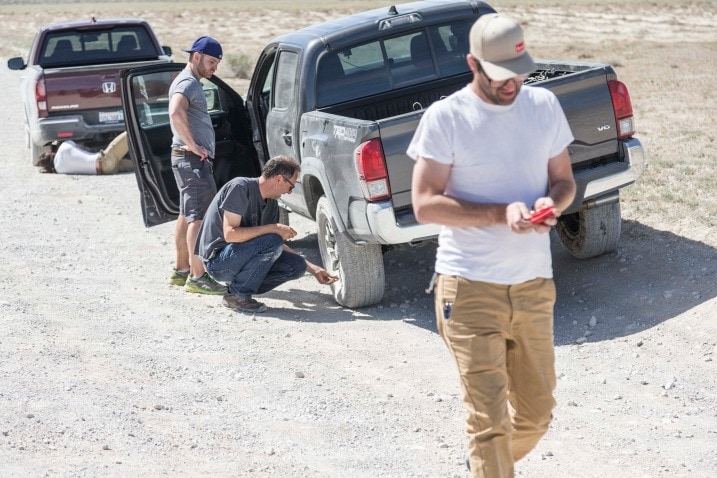


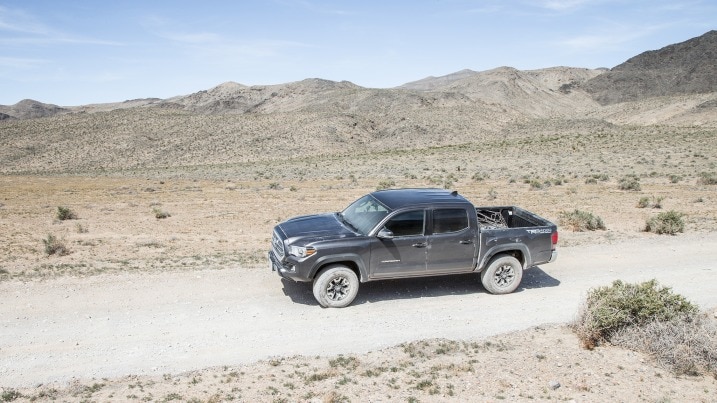
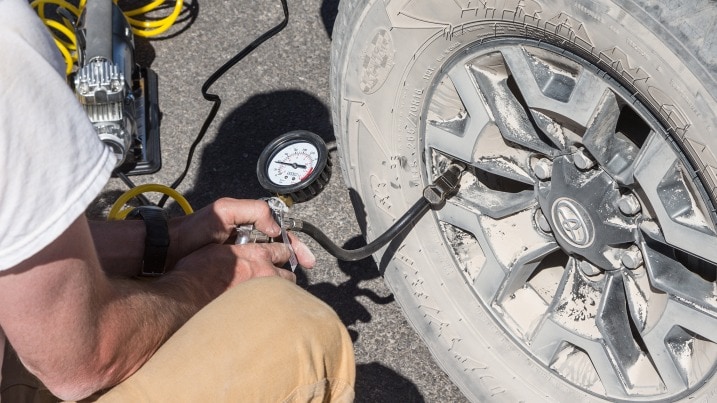
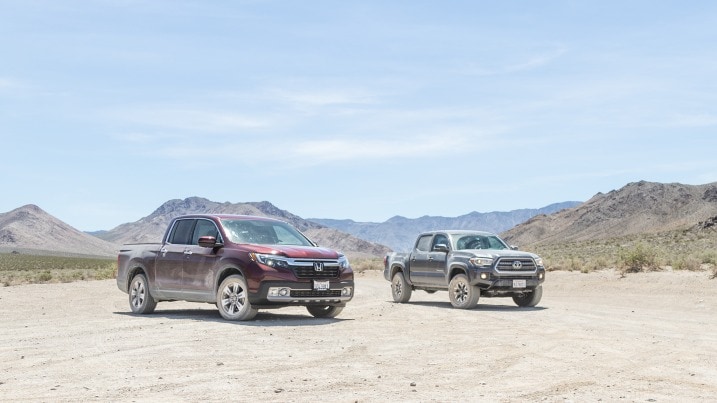
 by
by 